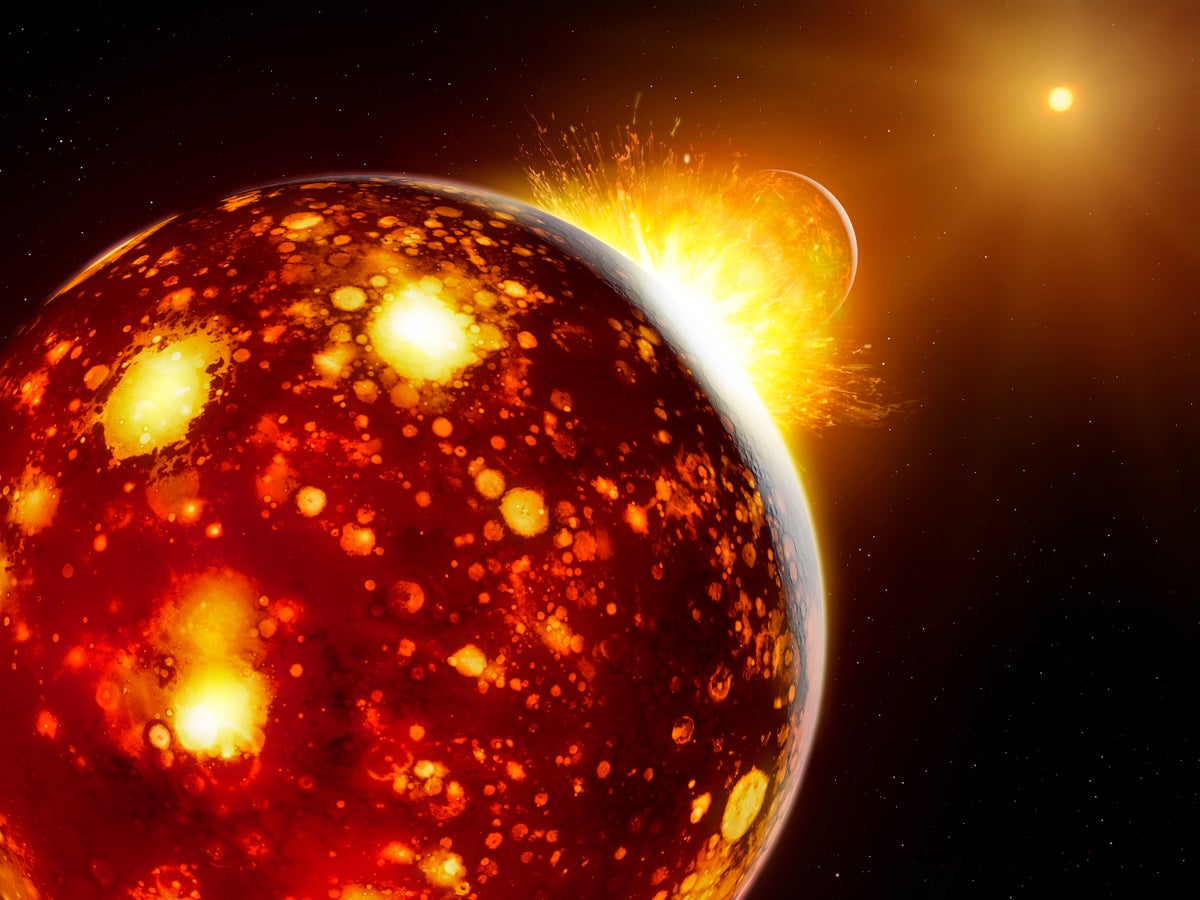New Research Details Moon's Violent Birth from Ancient Earth Collision
Scientists confirm the Moon formed billions of years ago from a collision between Earth and a Mars-sized object named Theia, which originated closer to the Sun.
Overview
- The Moon was created billions of years ago when a Mars-sized object, named Theia, violently collided with the early Earth, ejecting material that coalesced.
- Research confirms the Earth and Moon share nearly identical isotopic and chemical compositions, strongly supporting a common origin from this ancient impact event.
- Scientists suggest Theia, the impactor responsible for the Moon's formation, likely originated in the inner solar system, closer to the Sun than Earth.
- This theory explains the presence of specific elements like molybdenum and zirconium in the Moon, which Theia is believed to have contributed during the collision.
- The findings provide crucial insights into the early history of our solar system and the dramatic processes that shaped planetary bodies, including Earth and its natural satellite.
Report issue

Read both sides in 5 minutes each day
Analysis
Center-leaning sources cover this scientific discovery neutrally, focusing on new research about the Moon's origin. They present the study's findings, methodology, and implications without evaluative language or selective emphasis. The reporting prioritizes factual dissemination of scientific information, explaining complex concepts clearly and concisely for a general audience, demonstrating a commitment to objective science communication.
Articles (3)
Center (1)
FAQ
The Giant Impact Hypothesis suggests the Moon formed when a Mars-sized object named Theia collided with early Earth about 4.5 billion years ago, ejecting debris that coalesced into the Moon.
Theia likely originated in the inner solar system, closer to the Sun than Earth, which explains certain elemental signatures observed in lunar materials.
Earth and Moon share nearly identical isotopic and chemical compositions, including elements like molybdenum and zirconium, indicating material mixing from both Earth and Theia during the collision.
Most of Theia's material was absorbed into Earth’s mantle and core, with some iron-rich portions forming dense blobs at the core–mantle boundary, while debris from the impact formed the Moon.
New simulations suggest the Moon may have formed immediately, within hours of the impact, from material launched directly into orbit around Earth.
History
- This story does not have any previous versions.



